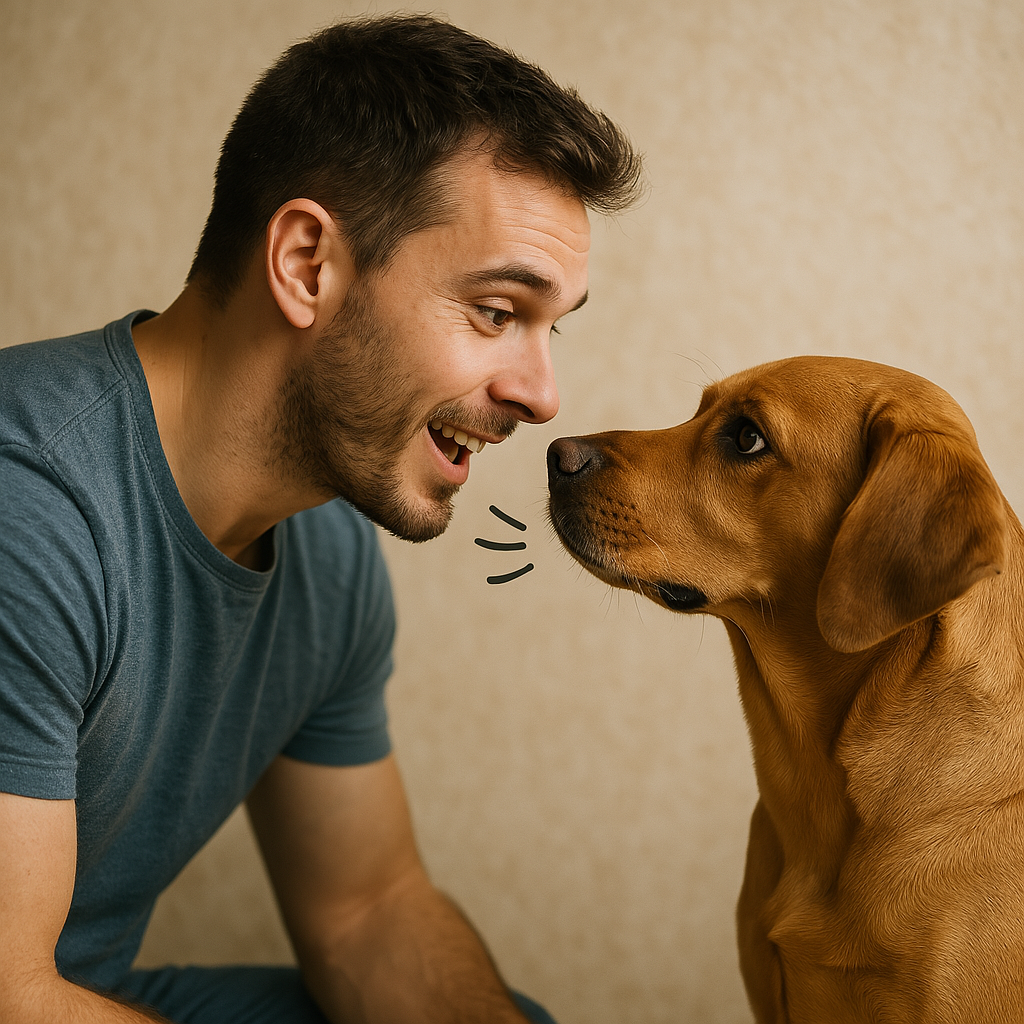Do You Know Your Dog is Constantly Talking to You?
Dogs are more than just loyal companions—they’re expert communicators. While they can’t speak in words, dogs have developed a sophisticated language made up of body signals, facial expressions, vocalisations, and physical contact to interact with us. If you learn to understand these signals, you’ll unlock a deeper connection with your dog and respond to their needs more intuitively.
How Dogs Communicate with Humans: Methods and Common Signals
1. Body Language: The Canine Communication Core
Body language is arguably the clearest and most consistent way dogs express how they feel. Every ear twitch or tail flick means something.
Tail Position and Movement: Don’t assume a wagging tail equals happiness. A low, slow wag may indicate nervousness or insecurity, while a high, fast wag often shows excitement or alertness. A tail tucked between the legs is a classic sign of fear or submission.
Ears: Forward-facing ears suggest curiosity or alertness, while flattened ears are a red flag for anxiety or fear.
Eyes: Direct eye contact can signal either trust or a challenge—it depends on the context. On the other hand, a dog avoiding eye contact might be feeling unsure or submissive.
Posture: A relaxed stance signals a calm, content dog. A stiff body may show tension, uncertainty, or even aggression. And that adorable “play bow”—front legs stretched forward, bum in the air—is a universal doggie invitation to have fun.
2. Vocalisations: More Than Just Barking
Dogs use a variety of sounds to get their message across. You just have to tune in.
Barking: Dogs bark for all sorts of reasons—alerting to danger, expressing excitement, asking for attention. The key is in the pitch, duration, and frequency.
Whining: This often means your dog wants something, is feeling anxious, or is trying to show submission.
Growling: Contrary to popular belief, growling doesn’t always mean aggression. It’s usually a clear warning that your dog is uncomfortable and needs space.
Howling: While more common in certain breeds, howling can be a response to sounds or a cry of loneliness.
3. Facial Expressions: Reading the Muzzle
Dogs have surprisingly expressive faces that can reveal a lot about how they’re feeling.
Mouth: A slightly open, relaxed mouth usually indicates a happy, relaxed pup. Lip licking or yawning (outside of being tired) often means stress or nervousness.
Eyes: “Soft eyes” with a gentle, calm gaze show a relaxed state. If you notice the whites of the eyes showing (known as “whale eye”), your dog is probably feeling uneasy or threatened.
4. Touch and Physical Contact: When Actions Speak Louder
Dogs are tactile creatures. How they physically interact with you is often a direct line to their feelings.
Nudging or Pawing: Usually a request for attention, playtime, or treats.
Leaning or Sitting on You: A sign of affection, trust, and comfort-seeking.
Licking: This can show affection, act as a calming signal, or reflect anxiety.
5. Learned Signals: Dogs Read Us Too
Dogs are not just sending signals—they’re constantly reading ours. They’re incredibly tuned in to our tone of voice, gestures, and habits.
Voice Tone: Dogs respond to tone more than actual words. A high-pitched, cheerful tone motivates and encourages, while a firm, low tone communicates correction or seriousness.
Gestures: Over time, dogs often learn hand signals that accompany verbal commands, making training and daily life smoother.
Routine Awareness: Ever noticed your dog get excited when you grab your keys or put on shoes? That’s because they’ve learned to associate specific actions with outcomes—like walks or you leaving the house.
It’s a Two-Way Street!
Your dog is always talking - it’s just not in a language we’re born understanding. But when you learn to read their signals and respond appropriately, the bond you share becomes stronger and more meaningful. Communication with your dog is a two-way street, and when you really start to listen, you’ll realise they’ve been making themselves very clear all along.

